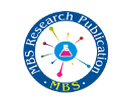Past Issue | Volume | Volume 2,Issue 5,May,2016
Abstract:-
Euphorbia kamerunica is commonly used by traditional healers to prepare medicine for many ailments in Nigeria. The present study revealed the morphological features, anatomical properties (leaf epidermis), phyto-chemical constituents (qualitative) and anti-microbial activities of Euphorbia kamerunica. It was observed that both morphological features and anatomical properties have taxonomic significance. Also, both antimicrobial activities and phyto-chemical studies support Euphorbia kamerunica to be a potential source of useful drugs. Further studies are required in order to isolate the active components from the crude plant extracts for proper drug development. This is necessary in drug research so as to prevent adulteration of the medicinal plant.
![]() NCDS : ROLE OF DIETARY ANTIOXIDANTS IN PREVENTION AND MANAGEMENT
NCDS : ROLE OF DIETARY ANTIOXIDANTS IN PREVENTION AND MANAGEMENT
Abstract:-
Non-communicable disease continues to be an important public health problem in India, being responsible for a major proportion of mortality and morbidity. Demographic changes, lifestyle modifications, increasing urbanization, lack of physical activity besides these environmental factors certain other factors contribute in development of oxidative stress like inflammation, stress, accumulation of toxins and immune down regulation thus pushing us towards non-communicable diseases. A variety of free radical scavenging antioxidants are present in dietary sources like green leafy vegetables, fruits etc, their consumption provides antioxidants to the body which act as inhibitors in the process of free radical generation. The main strategies are proposed to deal with the problem estimate need and advocate for action, develop national policies, strategies and plans for the prevention and care .
Abstract:-
Sensors are devices that are used to measure physical variables like temperature, pH, velocity, rotational rate, flow rate, pressure and many others. Today, most sensors do not indicate a reading on an analog scale (like a thermometer), but, rather, they produce a voltage or a digital signal that is indicative of the physical variable they measure. Those signals are often imported into computer programs, stored in files, plotted on computers and analyzed to death.
![]() ELECTRICITY BY ENERGY RESOURCES
ELECTRICITY BY ENERGY RESOURCES
Abstract:-
In physics, energy is a property of objects which can be transferred to other objects or converted into different forms. The "ability of a system to perform work" is a common description, but it is misleading because energy is not necessarily available to do work. For instance, in SI units, energy is measured in joules, and one joule is defined "mechanically", being the energy transferred to an object by the mechanical work of moving it a distance of 1 metre against a force of 1 newton.However, there are many other definitions of energy, depending on the context, such as thermal energy, radiant energy, electromagnetic, nuclear, etc., where definitions are derived that are the most convenient
![]() IN-VITRO ANTIBACTERIAL ACTIVITY OF LICORICE ROOT ON FOOD-BORNE PATHOGENS
IN-VITRO ANTIBACTERIAL ACTIVITY OF LICORICE ROOT ON FOOD-BORNE PATHOGENS
Abstract:-
The antimicrobial activity of Glycyrrhiza glabra showed that Klebsiella pneuminiae ATCC 31488 and Klebsiella aerogenes ATCC 9621 were resistant for all the extarcts. Aqueous extract of Glycyrrhiza glabra did not showed any antimicrobial effect on any of the test organism as well as on bacterial cultures isolated from food samples also. Enterococcus faecalis ATCC 29212 showed highest sensitivity against chloroform extract of the spice. Growth of Salmonella sp, Staphylococcus aureus and E. coli isolated from food samples was inhibited by all the extracts except aqueous one indicating its use for inhibiting growth of food microbes.
Abstract:- Background: Health status of women represents the health status of a country. They form a vulnerable or special risk group. The risk is connected with childbearing and nurturing. Postpartum blues is occurring in 70-80% of postnatal mothers. So the present study was undertaken to assess the knowledge regarding postpartum blues among staff nurses. Methodology: Purposive sampling technique was used to select a sample of 100 staff nurses. Self structured questionnaire was prepared to assess the knowledge regarding postpartum blues among staff nurses. Information booklet was administered after data collection to increase their knowledge.
Need PHD Research Writing Help?

